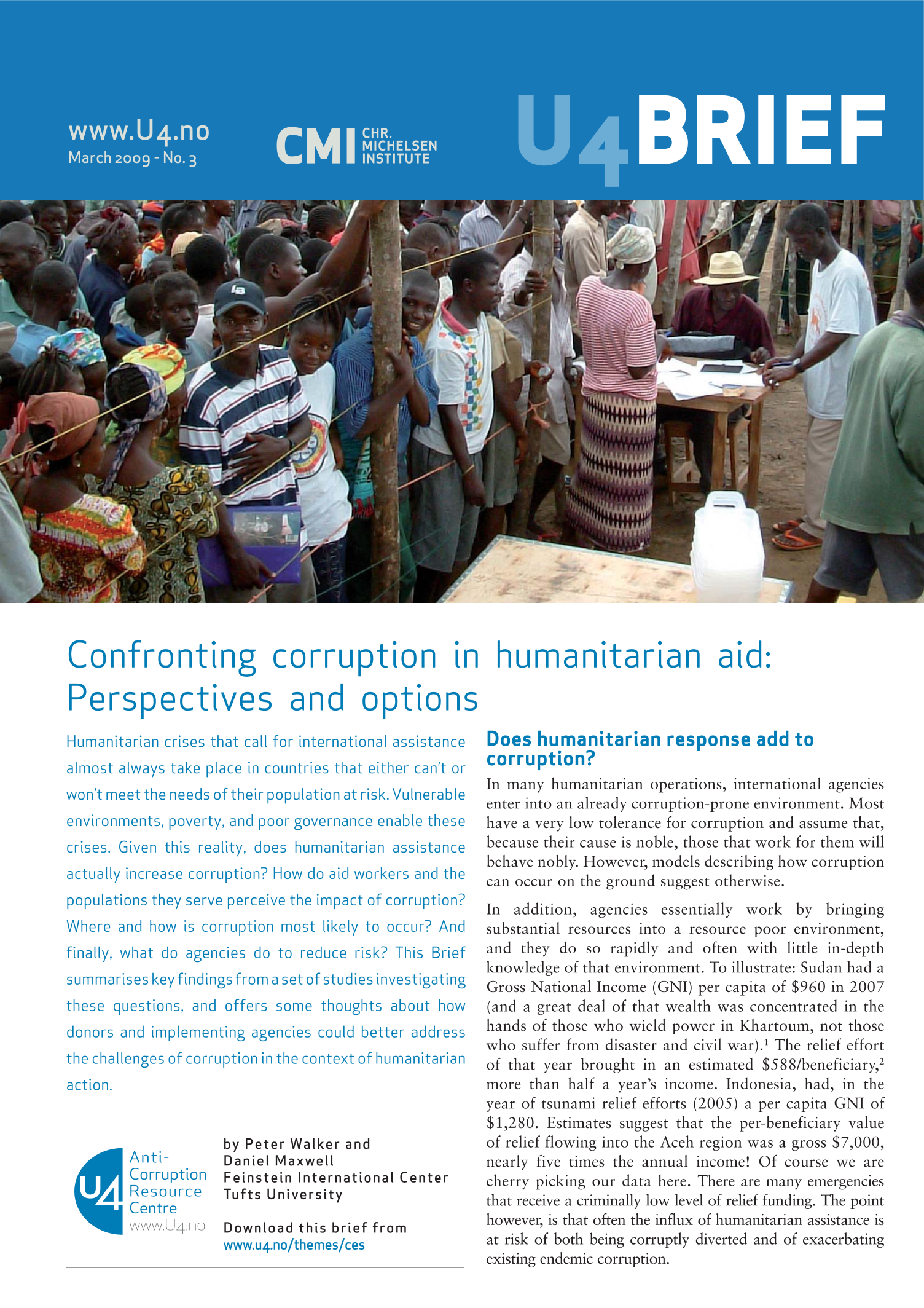U4 Brief
Confronting corruption in humanitarian aid: Perspectives and options
Humanitarian crises that call for international assistance almost always take place in countries that either can’t or won’t meet the needs of their population at risk. Vulnerable environments, poverty, and poor governance enable these crises. Given this reality, does humanitarian assistance actually increase corruption? How do aid workers and the populations they serve perceive the impact of corruption? Where and how is corruption most likely to occur? And finally, what do agencies do to reduce risk? This Brief summarises key findings from a set of studies investigating these questions, and offers some thoughts about how donors and implementing agencies could better address the challenges of corruption in the context of humanitarian action.

Cite this publication
Maxwell, D.; Walker, P. (2009) Confronting corruption in humanitarian aid: Perspectives and options. Bergen: Chr. Michelsen Institute (U4 Brief 2009:3) 4 p.
Disclaimer
All views in this text are the author(s)’, and may differ from the U4 partner agencies’ policies.
This work is licenced under a Creative Commons Attribution-NonCommercial-NoDerivatives 4.0 International licence (CC BY-NC-ND 4.0)